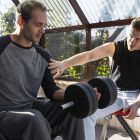Neck pain can occur due to many reasons, but osteoarthritis is one the common condition for neck pain. Neck arthritis is commonly called as cervical spondylosis or cervical osteoarthritis. In this condition, the joint undergoes degenerative changes which include wear and tear of bones, disc, and cartilage. This leads to osteophyte formation which may further progress to herniation of disc and spinal cord compression. Cervical spondylosis usually occurs in middle-aged and elderly populations.
Risk factors for neck arthritis
- Age: Wear and tear of bones and disc progresses with age which leads to increase chance of developing cervical spondylosis.
- Occupation: Working on desktop puts extra pressure on neck that weakens the muscle and ligaments leading to strain on bone and joints.
- Smoking: Smoking increases the degeneration of bones and joints.
- Genetic factors: Some people experience changes in spine if they have any family member with similar condition
- Previous injuries: old injuries weaken the structures around neck which increase the risk of developing arthritis.
Symptoms of neck arthritis
Sometime you may have degenerative changes in your neck and you might even not notice as it can be asymptomatic. If symptoms do occur, then pain and stiffness of neck is the first symptom to be experienced which can get worse with movement of neck. Other symptoms can be:
- Muscle spasm
- Cervicogenic headaches
- Clicking and popping sound in neck at the time of movement
- Restricted range of neck
- As the condition progress you can feel tingling sensation, numbness and weakness in shoulder and arms
- In case of cervical myelopathy, “red flag” signs can be seen like: grip weakness, abnormal coordination and gait, bowel and bladder involvement along with associated physical findings.
Effective treatment for arthritis of neck
Neck arthritis treatment depends upon the severity of your symptom. In the absence of “red flag” signs, the main goal of the treatment is to reduce pain and stiffness. Also, to prevent the progression of condition and injury to spinal cord. Various treating method includes:
-
- Oral medications like NSAIDs (Non-steroidal anti-inflammatory drugs), steroids, anti-depressants, anticonvulsants and muscle relaxants can be used to reduce pain and inflammation.
- Neck brace or soft collar can be advised for short duration of time to support the weak neck muscles only under the guidance of medical practitioner as longer use of collar can weaken your muscles.
- Physiotherapy treatment:
- Pain relieving therapies: physical modalities like therapeutic ultrasound, TENS, IFT, manual therapy can be found effective in relieving pain and stiffness in neck.
- Other advance therapies that faster recovery rate include:
Cupping therapy: this therapy improves the blood circulation of the area and promotes cell repair. It helps in releasing tight facia and muscle tension reduction. It also helps in improving the alignment of connective tissue.
Dry needling therapy: This is an invasive technique which releases trigger points in affected muscle. It helps in reducing inflammation, muscle tension, and pressure, a chemical in the muscle which leads to immediate pain reduction improved range of motion.
Taping therapy: Kinesiology taping helps in disrupting pain by reducing inflammation of muscle. It helps in stabilizing and activating the weak muscles while inhibiting the overactive muscles. It also helps in posture correction.
Matrix therapy: This therapy initiates the natural healing process of body. This results in pain relieving and improved range of motion. It also helps in improving the lymphatic drainage.
-
- Spinal decompression therapy: In case of radiating symptoms this therapy found to be very effective treatment. It decompresses the spinal structure. The reduction of pressure inside the disc aids in pulling nutrients, oxygen and moisture back into the disc. These nutrients accelerate the healing of degenerated disc and tissue.
- Exercises program: Exercise program is an important part of rehabilitation. Muscle activation, flexibility and strengthening exercises plays a major role in developing muscle balance and stabilization.
MedX treatment: Med X machine are designed to improve the strength of neck core muscles. MedX is based on the principle of muscle isolation which targets the specific muscles. This makes the exercises more effective and safer.
- Surgical Management:
In severe cases where conservative management fails, surgery is usually advisable. For patients who have progressive changes in neurological symptoms with signs of spinal cord involvement then surgery is the better option for them. The various surgical procedure involves anterior cervical discectomy and fusion, anterior cervical corpectomy and fusion, laminectomy, and laminoplasty.
Post-surgery it is important to continue the life style modification and strengthening exercises to prevent the recurrence of symptoms.
Precautions and life style modification includes:
- Avoid overhead weight lifting activities,
- Avoid prolonged working on laptops.
- Applying ice/heat therapy can help in easing out the soreness of neck muscles.
- Regular exercising can help in speeding up the recovery. This can include neck and back core muscle strengthening. Walking can also be found effective as it increases the activity level of the body.





